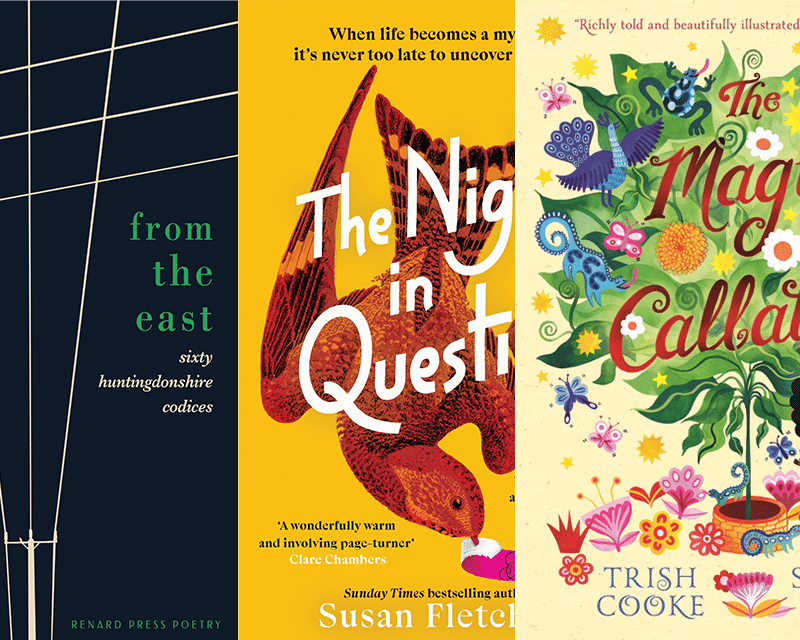- Collected
- Article
Haunted by Gesualdo
The artistic afterlives of a sixteenth-century composer and murderer

- 11 January, 2016
- Shaun McCarthy
Ihave often heard playwrights asked what inspired them to write a play. Answers vary. They were invited to write to a brief in collaboration with a director or company. They wanted to dramatise their grandfather’s extraordinary life as a mahout (or whatever). They had long held a particular belief that they wanted to explore in drama. I have also heard writers say that they were inspired by coming across a single gem or nugget of fact, or some character or situation that in some way struck a chord with them. Something very far from sufficient raw material for a complete stage- or screenplay but which nonetheless lodged and would not go away.
Some years ago a friend introduced me to the strange, dark and torturous music – and even stranger, darker and psychologically tortured life story – of the Italian Mannerist composer Don Carlo Gesualdo, Prince of Venosa (1566–1613). He is also known, by those who know him at all, as the entirely unapologetic murderer, in 1590, of his young first wife, Donna Maria, and her lover, the Duke of Andia — and for his reclusive later life in his remote and gloomy castle at Gesualdo. His music is difficult, haunting and at times unsettling and was more or less forgotten until the early twentieth century.
Here was a life story and a body of music that I knew I wanted to write about. What I wanted to write, however, was a long way from being clear. I acquired a copy of what was, at that time, the only readily available book about the man: Glenn Watkins’ Gesualdo: The man and his music (Oxford, 1973). The artless title scarcely fits the only major Renaissance composer who, because he was a Prince, never subjected his creative vision to the demands of a patron. He wrote for himself, and for the God he clearly believed glared remorselessly down on him and his crimes.
In the later, reclusive years of his life Gesualdo maintained a retinue of singers and musicians in his castle. His second wife, Leonora D’Este of the great family of arts patrons (whose court at Ferrara was, in tone and style, everything that Gesualdo’s remote castle was not), created various reasons to be generally absent. As far as we can tell from a few scant accounts, the artists he maintained were an unusually well-treated part of his otherwise generally murky world, enjoying a secure situation rare in other more well-regarded and socially regulated courts.
I quickly discovered that, of course, anyone with an interest in Renaissance music knew of Gesualdo even if they found his works stressful — soaked, as it seems to modern ears, with neurotic personal guilt and contorted with obsessive Mannerist invention. Responsoria et alia ad Officium Hebdomadae Sanctae spectantia – nine intense vocal pieces of complex chromatic construction for the service of Tenebrae (‘darkness’) – is unlikely to appear regularly on any Classic FM playlist. The main feature of Tenebrae is the gradual extinguishing of candles upon a stand in the sanctuary that is called a hearse. It is so typically Gesualdo: this was not a man to compose a rosy, uplifting carol.
Research quickly led me to Gesualdo: death for five voices, a film by Werner Herzog (1995), and to no fewer than seven operas and nine other musical works about Gesualdo’s life and music. I found a second book by the previously rigorously musicological Professor Watkins, the surprisingly titled The Gesualdo Hex (Norton, 2010), which delved into the more lurid elements of Don Carlo’s last, reclusive years, including his sexual activities with a number of mistresses and prostitutes. On the evidence of the titles alone, something must have shifted radically in Watkins’ mind-set in the 37 years since the first book — or maybe he got a more commercially minded agent. Either way, Watkins could clearly not let go of Don Carlo.
As recently as 2008, Scottish Opera premiered 5:15: A bloodbath in 15 minutes, a largely biographical sketch for a future full-length opera, with a libretto by the crime writer Ian Rankin and music by Craig Armstrong. It was clear that I was trying to enter a field crowded with Gesualdo-inspired works, yet there was something in this apparently unending remorseful gloom and sporadic violence that would not leave me alone. I wanted to explore a question that I knew I could never actually answer: what was his life, and that of those around him, really like on a day to day level? Was there strict and chilly deference to rank and status? Or did shared artistic endeavour lead to — to what? A relaxed, creative atmosphere? Merriment even as the inhabitants of the castle settled down to eat in the hot summer evenings of Southern Italy? What story could be used to enter this imagined world and construct a human dimension around the facts of the murders and the music?
I was not attracted to the idea of writing a drama which tried to explain what drove Don Carlo’s violence or his creativity. What fascinated me was the contrast between the raw emotional intensity of the music with the character of its composer. More than many other historical figures, Gesualdo has retreated into the shadows. We don’t even know what he looked like: unusually for a man of his time and rank, he never sat for a portrait.
I would like to say that from the outset I saw this as a play for stage. In fact, I planned a radio drama. I had recently had Fireworks broadcast on BBC Radio 4’s Saturday Playhouse. This dramatized the premiere of Handel’s Music for the Royal Fireworks, and it seemed interesting to move on from a radio drama that featured well-known music to one about a little-known composer. And period radio dramas do not incur the often deal-breaking costume and design budgets of theatrical productions! However, the BBC had a backlog of diverse period dramas and were not disposed to develop any more. Don Carlo would have to come alive as a visible, moving figure on stage.
I felt that a whole evening of men and women moving around glum candlelit interiors in sixteenth-century costume would not deliver the play I wanted to write. I needed a larger and more atmospherically varied frame for the action. The solution was to employ a device that has been used several times in modern drama: two time periods, historical and contemporary, with a cast of characters in each era. This has been most famously used in Tom Stoppard’s 1993 masterpiece, Arcadia, which features a modern-day writer and a literary scholar arguing over what happened during a visit by Lord Byron to a country house in 1809.
I created a musicologist with a passion for Gesualdo who, travelling in Italy, meets a doctoral music student. He attempts to seduce her by recounting Gesualdo’s story. He is Stephen: British, serious and a little lost in Naples. She is Lucy: American, academically not as exalted as Stephen but more at ease. So far the power was all his: something was needed to balance the relationship. This was achieved by giving her a depth of feeling for Gesualdo that Stephen cannot match.
The play is called Sanctuary because Lucy believes that this was what Don Carlo strove to create in his music, if not for himself then for listeners in years to come. (Who of course he assumed would share his religious devotion.) Until Stephen meets Lucy, he has essentially experienced the music as the artistic product of a specific style and period. Lucy encourages him to hear Gesualdo as a man striving to express his soul, however dark it might have been. She makes the music come alive for Stephen in a new, passionate way. I hope Lucy’s feelings for the music of the (as it turned out) last Prince of Venosa will balance the darkness of his life; I hope the play will contrast that long-ago fading into shadows with the contemporary, sunlit meeting of two music lovers who may themselves become lovers. And I hope that Sanctuary will be something new and original, even if Don Carlo Gesualdo, Prince of Venosa, has been the inspiration for so many other artistic endeavours.
After his death, everything that surrounded Gesualdo faded. Complex legal contentions and scandals ensured that the title Prince of Venosa was lost and the family died out. As one contemporary chronicler of ‘the misfortunes that accrued to the house of Gesualdo’ put it: ‘Thus did it please God to destroy, both in possession and honour, a princely house which descended from ancient Norman kings.’ Only the music survived — almost entirely ignored for over 300 years but rediscovered and, now, an inspiration for writers and composers, and for me.
You might also like:
No facts, only versions
Memoirs are as much about what is excluded as what is included. This edition examines how you can evoke the…
RLF Fellows’ News: April 2024
Publishing News RLF Fellow Trish Cooke’s new children’s book, The Magic Callaloo, is set to be published by Walker Books…
Susan Fletcher on outsiders in fiction – literal and imagined
I’ve always known that I’ve preferred to be outside. To be an outsider – literally, and, specifically, amongst wild places…


